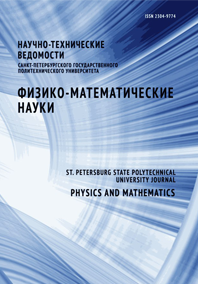Conductivity features of the nanomodified HTSC structures
The transport characteristics of nanostructures consisting of microcrystalline YBa2Cu3O7-δ powder and nanopowder of the same composition have been studied in the nanosecond duration interval of the pulse voltages applied to the nanostructure. An increase in the critical temperature Tc of the transition to the superconducting state was established to occur at the 20% nanopowder content. The obtained experimental data was interpreted in terms of the percolation theory. This theory holds that the optimal nanopowder content in the nanomodified material causes a rise of the maximum number of micropowder-nanopowder Josephson’s contacts. An increase in the structure porosity when the content falls off from the optimum, leads to a break-down of a percolation cluster and to a decrease in the Tc value; moreover, the temperature range where the transition to the superconducting state takes place, spreads.


